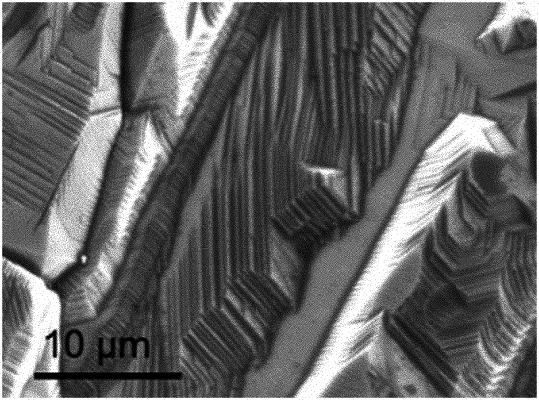| CPC C04B 35/505 (2013.01) [C04B 35/443 (2013.01); C04B 35/4682 (2013.01); C04B 35/50 (2013.01); C04B 35/638 (2013.01); C04B 35/64 (2013.01); C04B 2235/3208 (2013.01); C04B 2235/3215 (2013.01); C04B 2235/3222 (2013.01); C04B 2235/3224 (2013.01); C04B 2235/3225 (2013.01); C04B 2235/3236 (2013.01); C04B 2235/5409 (2013.01); C04B 2235/5445 (2013.01); C04B 2235/604 (2013.01); C04B 2235/608 (2013.01); C04B 2235/6025 (2013.01); C04B 2235/6027 (2013.01); C04B 2235/6562 (2013.01); C04B 2235/6567 (2013.01); C04B 2235/667 (2013.01); C04B 2235/77 (2013.01); C04B 2235/786 (2013.01)] | 5 Claims |

|
1. A method for making a ceramic having transgranular fracture behavior, comprising: forming a green body comprising lutetium oxide powder; densifying the green body using microwaves to heat the green body at a rate of 100° C./min to 1500° C. and then holding at 1500° C. for 15 minutes, wherein the microwave frequency is greater than 30 GHz, wherein a ceramic is formed, and wherein there are dislocations within the ceramic; and cooling the ceramic to room temperature to trap the dislocations in the ceramic, resulting in a ceramic having a transgranular fracture mode.
|